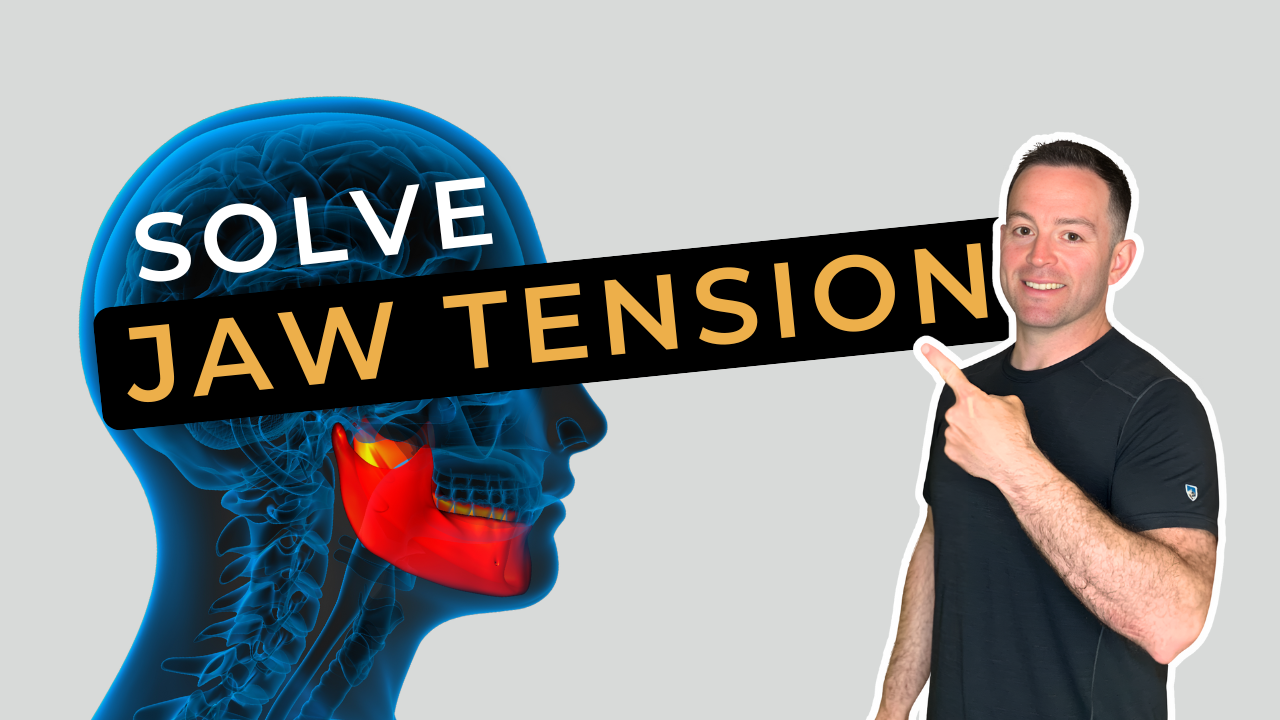TMJ Exercises & Mobilizations to Relieve Jaw Tension

3 Effective Exercises to Alleviate Your TMJ Pain
Suffering from TMJ pain can be a debilitating experience, affecting your ability to eat, speak, and even sleep comfortably. However, relief could be just a few exercises away. Today, we're diving into three exercises that have proven to be effective for many in managing and potentially reducing TMJ pain. Remember, it's essential to perform a baseline assessment of your jaw's range of motion and pain levels before and after each exercise to personalize your approach. Let's explore these exercises designed to stretch, mobilize, and enhance the motor control of your jaw.
1. Jaw Mobilization Stretch
Begin with what's humorously referred to as the 'Pac-Man Stretch'. This gentle mobilization exercise involves using your hands to create a distraction on your jaw, promoting increased range of motion. Position your hands along your jawline, and gently open your mouth while stabilizing the lower jaw with your hands. This action aims to stretch and mobilize the upper portion of your jaw without forcing it, keeping the intensity at a comfortable three out of 10.
2. Trigeminal Nerve Glide
Next, we focus on the trigeminal nerve, a key player in TMJ pain. This exercise is a bit more technical, involving a series of precise movements to put gentle tension on the nerve. Start with upper cervical flexion, then laterally flex your upper cervical spine and glide your jaw away from the targeted side while maintaining full cervical flexion. Small nodding motions or jaw glides can help mobilize the nerve further. It's crucial to keep the movements gentle and focused to avoid exacerbating any pain.
3. Jaw Motor Control Training
After stretching and mobilizing, it's time to train the motor control of your jaw. This involves simple forward and backward glides of the bottom teeth, followed by side-to-side movements. These exercises aim to improve the coordination and smoothness of jaw movements, reducing any jerky motions that can contribute to pain. Regular practice can help your brain map out pain-free patterns of movement, crucial for long-term TMJ management.
Incorporating these exercises into your daily routine can potentially offer significant relief from TMJ pain. However, it's essential to listen to your body and adjust the exercises according to your comfort level. Always start gently and gradually increase the intensity as your jaw becomes more accustomed to the movements. With patience and consistency, you can take proactive steps toward managing your TMJ pain more effectively.

👋🏻 Hi, I’m Taylor Kruse, a strength & mobility coach who’s passionate about jiu jitsu and neuroscience. I help you with daily exercise and recovery tips so that you can squash your pains and make those gains!
Whenever you're ready here's how we can help you:
- Join our neuro community for health & movement pros to begin practicing the fundamentals of applied neurology in our Dojo Membership
- Master applied neurology so you can feel confident you can help anyone who walks through your door by joining our live course, The Neuro Dojo
ARE YOU A MOVEMENT PROFESSIONAL WHO CARES DEEPLY ABOUT YOUR CLIENT'S RESULTS
Learn how to achieve lasting change using applied neurology
Begin practicing the fundamental of applied neurology so you can become an expert in problem solving movement and pain issues.

